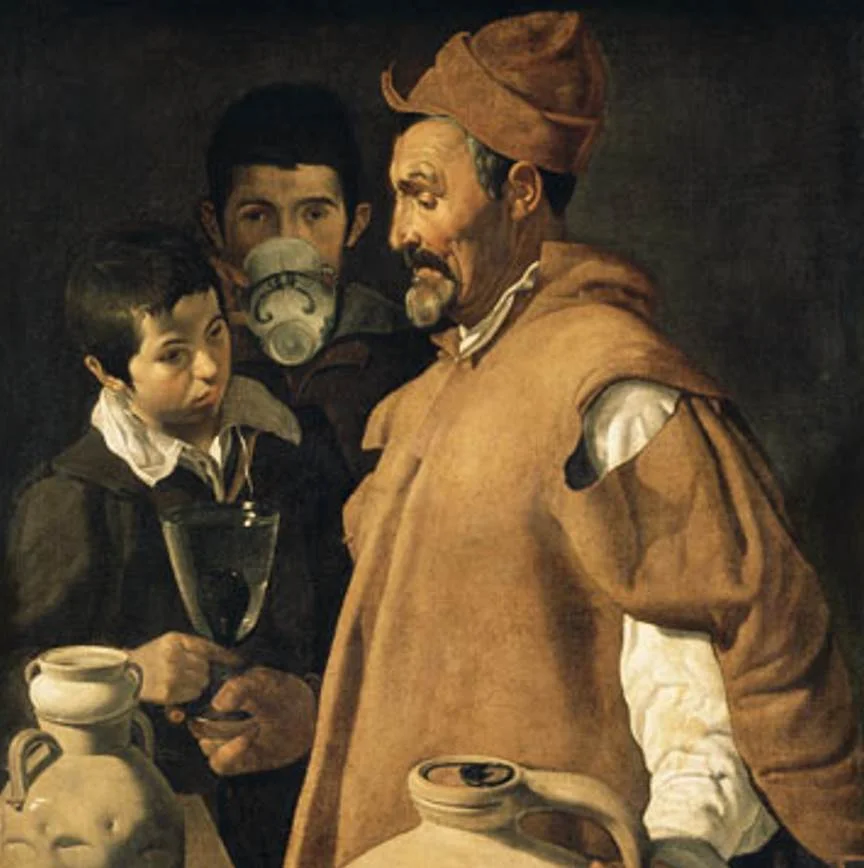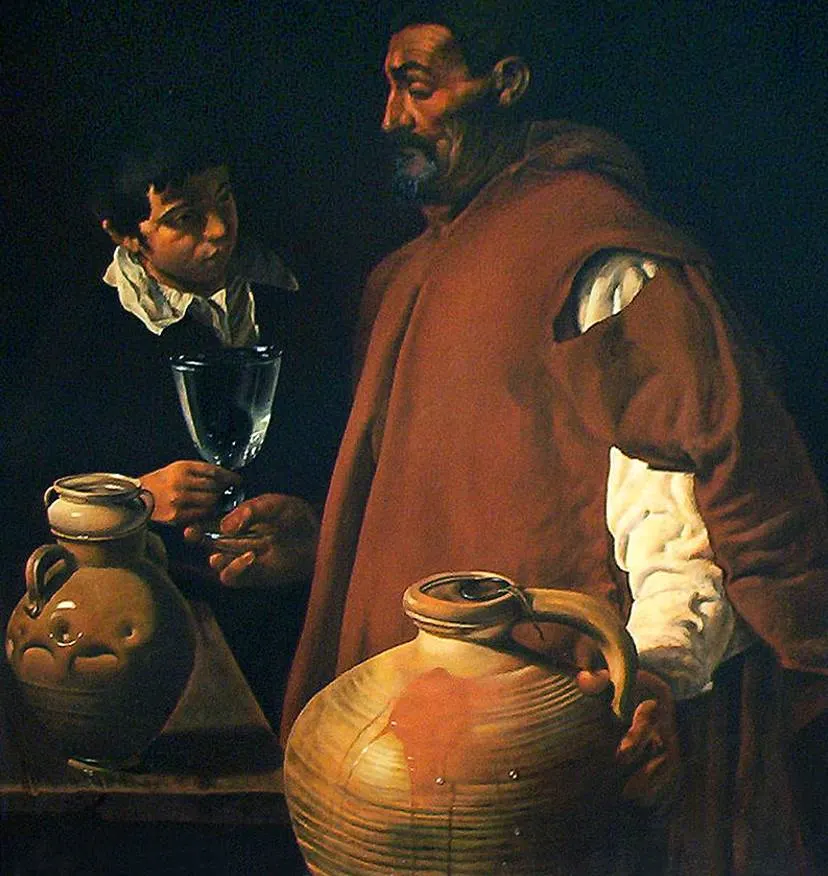The unmistakable talent of the Spanish painter of the Baroque period Diego Velázquez (1599-1660) was already pretty clear when he completed his first works.
One of the most remarkable works of his initial period in his hometown in southern Spain is called “The Waterseller of Seville.” Let’s take a closer look at some of the most interesting facts about this masterpiece by Velázquez.
1. The title of the painting refers to 3 separate paintings by the artist
The Waterseller of Seville is the name of 3 different paintings created by Diego Velázquez. These are pretty much identical except for a couple of details. The 3 works are defined by their location:
- London version – On display in the Waterloo Gallery of the Apsley House in London.
- Florence version – On display in the Uffizi Gallery in Florence, Italy.
- Baltimore version – On display at the Walters Art Museum in Baltimore.
The London version is considered to be the original painting and arguably the best as well. The Florence version looks a bit backward in comparison because the old man wears a hat, and the Baltimore version is distinguished by the extreme use of colors.

2. It was painted while Velázquez was still an apprentice
It’s unclear when exactly each of these paintings was completed, apart from the fact that they were painted while Diego Velázquez was still an apprentice living in Seville.
His teacher was actually his father-in-law, a man named Francisco Pacheco (1564-1644). While he was a great teacher, this mannerist painter wasn’t nearly as good an artist as many of his students.
This also means that by the time these paintings were completed, Velázquez had already established himself as a master at a level that Pacheco never achieved himself.
These paintings emphasize this notion and clearly show why he eventually went on to become the Spanish court painter of King Philip IV.
3. It’s a bodegón depicting a common profession in 17th-century Seville
The early works of Velázquez were mostly paintings defined as “bodegón.” These paintings depict everyday kitchen items and pantries, but also sometimes scenes inside a tavern.

The Waterseller of Seville is one of these paintings that is considered to be a bodegón because of the presence of beverages and the extreme realism in which the scene was painted.
Even though the exact location is unclear, it’s assumed that it takes place inside a tavern, most probably inside a cellar. This notion is made strong because of the light source coming solely from the left, as seen on the faces of the boy and old man, as well as on the pots with water.

4. The young boy appears in multiple of the artist’s works
It’s known that the artist used family members as models for his paintings. This is reflected by the fact that the boy depicted in this painting, of whom we don’t know the identity, appears in a couple more paintings of the artist as well.
This boy appears in both “The Lunch” (1617), one of his earliest completed paintings, and “Old Woman Frying Eggs,” (1618-1620) one of the most renowned paintings of his period in Seville.
The old man in “The Lunch” appears to bear a striking resemblance to the man selling water in this painting as well.
5. The early works of Velázquez were probably inspired by Caravaggio
Poverty was a great source of inspiration for Diego Velázquez. His realistic depiction of people as they really were is quite profound. It seems as if every element was painted with nearly photographic precision.
His use of color is astonishing as well and pretty much resembles the style of his Italian colleague Caravaggio. Even though he most probably never saw a real work of this Italian master, he was probably aware of them from copies and perhaps even by polychrome statues located in churches in Seville.
Even though his paintings can hardly be described as provocative, a description that sometimes fits the works of Caravaggio, they don’t idealize the characters and circumstances as well.
These qualities eventually led him to Madrid where he painted numerous portraits of the royal family, including his ultimate masterpiece “Las Meninas” (1656), nearly 4 decades later.

More interesting facts about the Waterseller of Seville by Velázquez
6. The 3 paintings have about the same size and are far from being the artist’s largest work. The London version has dimensions of 105 × 80 centimeters (41 × 31 inches). The one located at the Uffizi Gallery is slightly smaller and measures 104 × 75 centimeters (41 × 30 inches).
In comparison, his ultimate masterpiece “Las Meninas” is significantly larger as it has dimensions of 318 × 276 centimeters (125.2 × 108.7 inches).
7. One of the main differences between the London version and the Florence Version, apart from the fact that the old man wears a hat, is that the man in the background is clearly visible.
This figure has nearly completely faded over the past 4 centuries in the original version but can be clearly seen drinking water in the painting on display in the Uffizi Gallery.

8. The young boy and the old man never make eye contact, nor do they look at the viewer. That’s remarkable because they both touch the glass of water at the same. This is described as common behavior from someone from the lower classes during this period in history.
Inside the glass of water, there appears to be a strange object, but that’s actually a fig. This makes the water taste fresher and is a habit still conducted in Seville until today.
9. The peculiar expression on the old man’s face in combination with his wrinkles and wart-ridden skin reveal that he was really sick. This was also confirmed by painter and art historian Antonio Palomino (1655-1726).
This notion might also reveal why the boy averts his look from the old man and why he accepts the glass without any form of acknowledgment.
10. The expression on the old man’s face is even worse in the Baltimore version of the painting. The color combination in this painting also makes the pots even shinier than they are in the other versions, quite amazing indeed.
The man in the background is completely invisible in the dark cellar as well, something that makes the color scheme in the foreground stand out even more.

